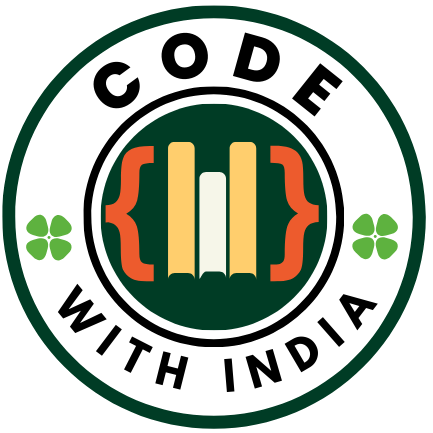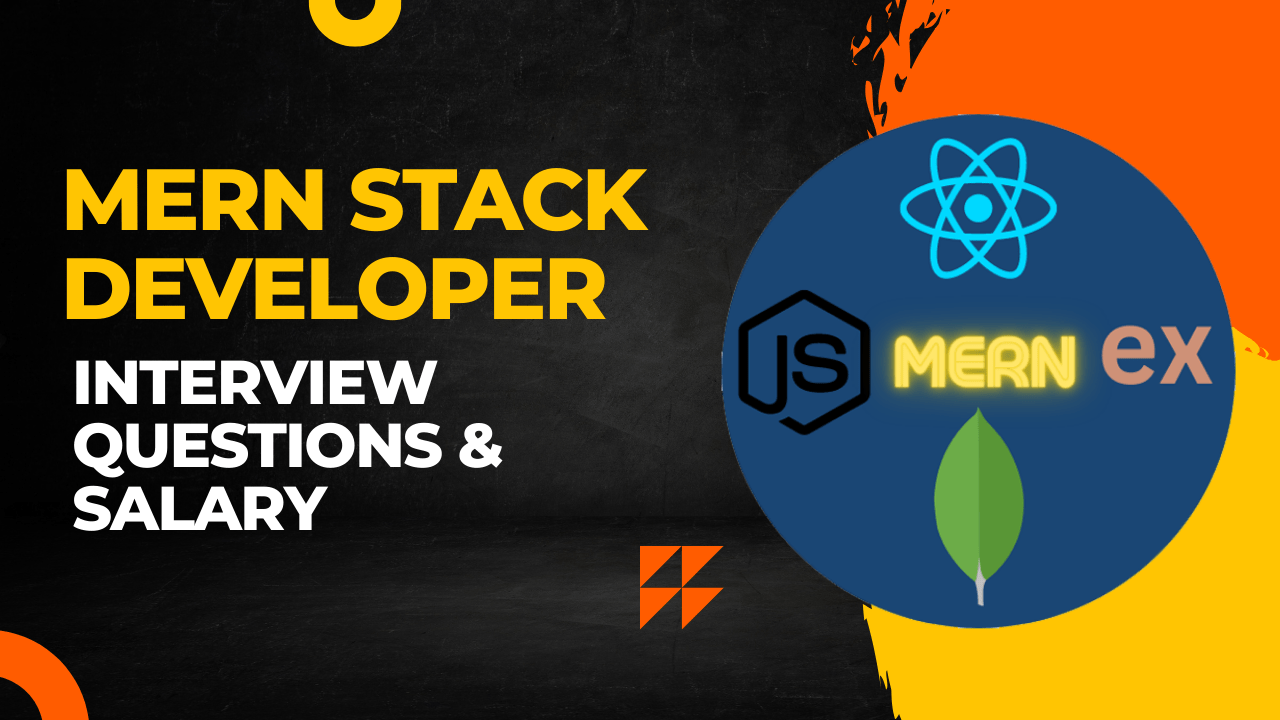MERN Stack Developer Interview Questions: The MERN stack, which includes MongoDB, Express.js, React, and Node.js, has become one of the most popular tech stacks for developing dynamic web applications. As a MERN Stack Developer Interview Questions, you need to be well-versed in both front-end and back-end technologies. With the growing demand for MERN Stack Developer Interview Questions, it’s crucial to prepare for interviews by understanding the types of questions you might face and knowing the current salary trends. In this blog post, we will explore the top 20 MERN stack developer interview questions and provide insights into the salary expectations for 2024.

Table of Contents
Top 20 MERN Stack Developer Interview Questions
1. What is the MERN stack and why is it used?
The MERN stack is a combination of four key technologies used to create full-stack web applications. It includes MongoDB for the database, Express.js for the backend web framework, React for the front-end framework, and Node.js for the backend runtime environment.
2. How do you set up a basic MERN stack application?
Setting up a basic MERN stack application involves installing Node.js and npm, setting up a backend server using Express.js, creating a MongoDB database, and developing a front-end interface using React.
3. Detail the significance of MongoDB within the MERN stack.
MongoDB is a NoSQL database used in the MERN stack for storing data in a flexible, JSON-like format called BSON. It allows for scalable and high-performance data storage.
4. What is Express.js and how does it work with Node.js?
Express.js is a lightweight and versatile Node.js web application framework that offers a comprehensive range of capabilities for both web and mobile applications, streamlining the management of HTTP requests and responses.
5. Explain the virtual DOM and its advantages in React.
The virtual DOM serves as an in-memory representation of the actual DOM elements created by React components before any alterations are applied to the web page. This approach enables React to streamline DOM updates by identifying the minimal set of changes required to synchronize the real DOM with the virtual DOM.
6. How do you manage state in a React application?
State management in React can be handled using React’s built-in useState and useReducer hooks for local state, and context API or libraries like Redux for global state management.
7. What is JSX and what purpose does it serve in React?
JSX stands for JavaScript XML. It is a syntax extension for JavaScript that allows you to write HTML elements in JavaScript. It makes the code easier to write and understand by combining HTML and JavaScript logic in one place.
8. How do you handle forms in React?
Forms in React can be handled using controlled components where the form input elements’ values are controlled by the component’s state, and event handlers are used to update the state.
9. What are middleware functions in Express.js?
Middleware functions in Express.js are functions that have access to the request object, response object, and the next middleware function in the application’s request-response cycle. They are used to modify the request and response objects, end the request-response cycle, and call the next middleware function.
10. Explain the concept of RESTful APIs and how they are implemented in Express.js.
RESTful APIs are APIs that follow the REST architectural style, which uses HTTP requests to access and manipulate data. In Express.js, RESTful APIs are implemented by defining routes that correspond to different CRUD operations and using middleware to handle HTTP requests.
11. What role does Mongoose play in a MERN stack application?
Mongoose serves as an Object Data Modeling (ODM) library designed for MongoDB and Node.js. It facilitates schema-based data modeling for applications, offering integrated capabilities for data validation and typecasting.
12. How do you secure a MERN stack application?
Securing a MERN stack application involves implementing authentication and authorization, using HTTPS, sanitizing user input, and protecting against common web vulnerabilities like SQL injection and cross-site scripting (XSS).
13. What are hooks in React, and how do they work?
Hooks are functions in React that enable the utilization of state and other React features within functional components, such as useState, useEffect, and useContext.
14. How can you enhance performance in a React application?
Performance optimization in React can be achieved by using React.memo, useCallback, and useMemo hooks, code splitting, lazy loading, and minimizing unnecessary re-renders.
15. What is server-side rendering (SSR) and how is it different from client-side rendering (CSR)?
Server-side rendering (SSR) is the process of rendering web pages on the server instead of the client, providing faster initial page load times and better SEO. Client-side rendering (CSR) renders the content in the browser using JavaScript.
16. What steps are involved in deploying a MERN stack application?
Deploying a MERN stack application involves setting up a hosting environment, such as Heroku, AWS, or DigitalOcean, configuring the server, and deploying the frontend and backend code.
17. Explain the use of Redux in React applications.
Redux is a state management library used in React applications to manage the global state. It provides a centralized store for state, allowing components to access and update the state in a predictable way.
18. How do you handle asynchronous operations in a MERN stack application?
Asynchronous operations in a MERN stack application can be handled using JavaScript promises, async/await syntax, and libraries like Axios for making HTTP requests.
19. What is the role of Webpack in a React application?
Webpack is a module bundler for JavaScript applications. Webpack bundles JavaScript files for browser usage and can also transform, bundle, or package any other resource or asset.
20. What methods are used to test a MERN stack application?
Testing a MERN stack application involves using testing libraries and frameworks such as Jest for unit testing, Enzyme for React component testing, and Supertest for API testing.
MERN Stack Developer Salary in 2024
Truth and Mystery in Salary
| Aspect | Truth | Mystery |
|---|---|---|
| Average Salary | The typical salary for a MERN stack developer in 2024 averages approximately $110,000 annually. | Salaries can vary significantly based on location, experience, and company size. |
| Experience Impact | Entry-level positions start at around $70,000 per year, while experienced developers can earn over $150,000 per year. | The exact salary can depend on the specific skills and technologies mastered. |
| Location Factor | Developers in tech hubs like San Francisco, New York, and Seattle tend to earn higher salaries. | Remote work options can blur geographical salary differences. |
Pros and Cons: MERN Stack Developer Interview Questions
Pros:
- High demand for full-stack developers
- Competitive salaries
- Opportunities to work on diverse projects
- Ability to work remotely
Cons:
- Requires a broad skill set
- Constantly evolving technology landscape
- High competition for top positions
Conclusion-MERN Stack Developer Interview Questions
Preparing for a MERN Stack Developer Interview Questions requires a solid understanding of the technologies and the ability to articulate your knowledge clearly. The demand forMERN Stack Developer Interview Questions continues to rise, offering lucrative salary opportunities for those with the right skills. By mastering the key concepts and keeping up with the latest trends, you can position yourself as a top candidate in this competitive field.
Follow us for more updates on: MERN Stack Developer Interview Questions


- Who is Tim Walz? Net Worth, Age, Family, and History
- ‘Very Demure Very Mindful’ Trendsetter Jools Lebron Loses Trademark Rights, Cries on TikTok
- Automated YouTube Thumbnail Background Creator By Ideogram AI 2024
- ISRO Offers Free AI/ML Course: A Chance to Learn Geodata Analysis
- Picking the Right DDR5 RAM for Your Laptop: A Complete Guide

